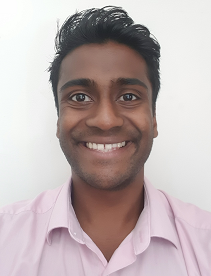Misinformation is a threat to everyone and we all have a role in challenging it at work and beyond, says Yathukulan Maheswaran
 As the public look to clinicians and scientists for expert advice during the covid-19 pandemic, it is now more important than ever that we remain vigilant to the dangers of misinformation at work and in our personal lives.
As the public look to clinicians and scientists for expert advice during the covid-19 pandemic, it is now more important than ever that we remain vigilant to the dangers of misinformation at work and in our personal lives.
Increasing levels of public uncertainty and anxiety have created a high demand for timely and trustworthy information about covid-19. Yet as Tedros Adhanom Ghebreyesus, director-general of the World Health Organization (WHO), warned a few months ago, we’ve been facing an “infodemic,” an overabundance of information of variable accuracy that is spreading “faster and more easily than this virus.” This excess of information has made it difficult at times for even the most discerning of readers to find reliable news and guidance when necessary.
Of course, misinformation and disinformation about science and health are neither new nor unique to the covid-19 crisis. Just as it is now, social media has played a part in spreading inaccurate medical information at other times in our history. The novel factor here is the sheer volume of available content. Cristina Tardáguila, associate director of the International Fact-Checking Network (IFCN), called covid-19 “the biggest challenge fact checkers have ever faced.” It is a problem exacerbated by the public having increased time to consume content under imposed lockdown, and an increased amount of time spent interacting over social media platforms rather than in person.
The dissemination of information is no longer at the behest of editorial gatekeepers. Social media has empowered everyone to share content. WhatsApp has noted an increase in service users forwarding messages and public figures have been sharing falsities online. With a greater proportion of the population working and studying from home, there are more opportunities to propagate information about false preventative measures, false cures, or sensationalist news headlines. The risk lies not only with the spread of factually incorrect and harmful information, but that key messages will not be received.
Throwaway tweets, innocent jokes, or a shared screenshot of an opinion are only a few iterations away from being regarded as news and, subsequently, influencing behaviours. We only have to read headlines about the vandalisation of phone masts in response to falsehoods about coronavirus being related to 5G to see that misinformation is a very real problem. Even healthcare professionals are not immune. I’ve heard personal reports of screenshots of false cures or disproportionate claims about the use of personal protective equipment being circulated in the WhatsApp groups of medical professionals. Misinformation is a concern for everyone.
Medical professionals, entrusted with a duty to their patients and the wider public, are well placed to challenge the rising tide of misinformation, to encourage readers to question the sources of their news, and to help ensure that key messages are delivered. With everyone’s personal lives affected by the pandemic, it is important that misleading information is confronted in the workplace and beyond. When “fake news” is fixed as a frequently used term in modern lexicon, our judgment and ability to communicate facts to the public is vital. More than 20 years later, the effects of Andrew Wakefield’s now retracted paper on MMR can still be felt, serving as a canonical example of the powers of misinformation. It is also a pertinent reminder of the influence of a medical voice.
It is important that doctors themselves remain fully informed from reliable sources. This serves not only to guide clinical practice, but to dispel myths and direct the public away from erroneous or misleading information.
These challenges are being met on multiple fronts. WHO teams have been working around the clock to respond to rumours that could be a threat to the public. Public health information is available on various social media channels, including myth busting fact sheets. WhatsApp has taken steps to impose a limit on message forwarding. They hope that by creating friction in the information sharing process, they can slow the spread of false information. Twitter, Facebook, and Youtube have removed posts from public figures with known false information—thereby addressing the problem of top-down misinforming.
For medical professionals, it remains vital to stay vigilant to the sources and spread of misinformation—whether it is challenging the credibility of information shared on groups, redirecting friends and family towards trusted sources, or debunking myths with factsheets on social media. In the workplace, clinic appointments, telephone consultations, or discussions with families can all be times to challenge potentially harmful health beliefs that are not rooted in fact. Misinformation is a threat to everyone and we all have a role in helping to understand and navigate this pandemic.
Yathukulan Maheswaran is a foundation year 2 doctor working in Birmingham with interests in medical education and global Health.
Competing interests: I have read and understood BMJ policy on declaration of interests and declare the following interests: none
